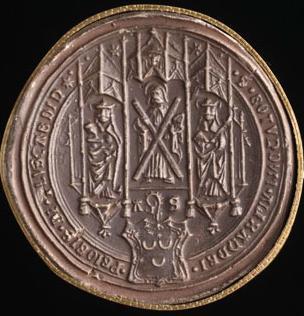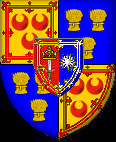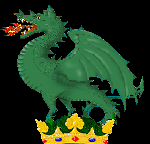| |
|
In adversitate patiens,
In prosperitate benevolus. |
|


SIR WILLIAM SETON, of whom it is
recorded that ‘he was the first creatit and made lord in the
Parliament, and he and his posteritie to have ane voit yairin, and
be callit Lordis.’ The younger son of this powerful baron married
the heiress of the great family of GORDON, and became the
progenitor of the Dukes of Gordon and Marquises of Huntly, as well
as of the Setons of Touch, hereditary armour-bearers to the King;
the Setons of Meldrum, of Abercorn, of Pitmedden, and other
branches of the house. He fought with the hereditary valour of the
Setons at the memorable battle of Harlaw in 1411, and in the wars
in France in 1421.
His elder son, SIR
JOHN SETON, 2nd Lord Seton, married a daughter of the tenth Earl
of Dunbar and March, and carried on the direct line of the family,
and was the ancestor of the Earls of Winton and Dunfermline, and
the Viscounts Kingston.
SIR JOHN SETON, the
third son of George, 7th Lord Seton, resided for some years at the
Court of Philip II., of Spain. Viscount Kingston in his historical
account of the Seton family says that Sir John ‘was a brave young
man,’ and that he was made by Philip ‘knight of the royal order of
St. Jago, att that tyme the only order of knighthood in that
kingdome of greatest esteem; in memory whereof he and his heirs
has a sword in their coat of armes, being the badge of that order.
King Philip also preferred him to be a gentleman of his chamber
and Cavalier de la Boca (Master of the Household). He also carried
the golden key at his syde on a blew ribbing, all which were the
greatest honours King Philip of Spain could give to any of his
subjects, except to be made a grandee of Spain. He had a pension
granted to him and his heirs of two thousand crowns yearly.’
Sir John Seton was recalled to Scotland by James VI., who made him
Lord Treasurer, Master of the Horse, and an Extraordinary Lord of
Session. The Seton's had hitherto been more
distinguished in warlike than in civil pursuits, but in the course
of the sixteenth and seventeenth centuries no less than six
members of the family obtained seats on the Scottish Bench.
Lairdships: Parbroath, Meldrum,
Touch, Mounie, Pitmedden, Preston and Ekolsund, Abercorn, Menie,
Bourtie, Hailes, Kirkliston,
Lathrisk, Garleton. Baronetcy's: Abercorn, Pitmedden, Windygoul, Garleton,
Olivestob.
| |
 |
 |
Earl of Winton, Lord Seton
Baron of
Seton, Tranent, Winton and Wynchburgh

Earl of
Dunfermline Baron of Fyvie,
Lord Fyvie, Lord Urquhart
Duke of Gordon, Marquis
and Earl of Huntly
(as Gordon) Lord
Gordon
Earl of Sutherland (as
Gordon)
Earl of Eglinton
(as Montgomerie)
Viscount Kingston
Lord
Pitmedden
Lord
Kilcreuch
Lordship and Baron of Barnes
|
